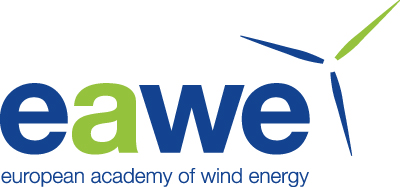A wind turbine digital shadow for complex inflow conditions
Abstract. We present a digital shadow Kalman filtering approach based on the direct linearization of a multibody aeroservoelastic model of a wind turbine. In contrast to approaches based on ad hoc models, the reuse of existing trusted models reduces development time and duplication of effort, leverages resources invested in tuning and validation, and eventually increases confidence in the results.
This approach has already been pursuded by others, but it is here improved with respect to several main aspects of the formulation. To extend the applicability to non-symmetric, waked, and yaw-misaligned conditions, the filter-internal model – in addition to the tower fore-aft and rotor rotational dynamics – now also includes the tower side-side and the flapwise and edgewise degrees of freedom of the rotor blades. To make the model aware of the inflow conditions at the rotor disk, inflow estimators are used to detect in real time during operation rotor-equivalent values of the wind speed, vertical shear, horizontal shear (on account of waked conditions), and yaw misalignment (in support of wake-steering control). These inflow parameters are used to schedule the filter-internal model, adapting its behavior to the current conditions experienced by the turbine. Furthermore, the filter-internal white-box model is augmented with data-driven corrections to improve its predictive accuracy. Two approaches are explored for the correction of the model: a bias correction method that attempts to improve both states and outputs, and a neural-based one that only corrects the outputs but not the states.
The proposed digital shadow is demonstrated first in a simulation environment, considering clean freestream, waked, and wake-steering conditions, and then using a field dataset collected on an instrumented turbine. To further validate its performance under complex inflow conditions, additional field data evaluations are conducted, including cases of extreme vertical shear, waked, and wake-steering conditions. Remarkably, the quality of the estimates of the damage equivalent loads for the field case is similar to the simulation case, even without any specific correction of the filter-internal model. However, after applying correction techniques, the quality of the estimates improves drastically, yielding errors in the damage equivalent load estimates of only a few percentage points.
Competing interests: At least one of the (co-)authors is a member of the editorial board of Wind Energy Science.
Publisher's note: Copernicus Publications remains neutral with regard to jurisdictional claims made in the text, published maps, institutional affiliations, or any other geographical representation in this paper. While Copernicus Publications makes every effort to include appropriate place names, the final responsibility lies with the authors. Views expressed in the text are those of the authors and do not necessarily reflect the views of the publisher.




The authors present a digital shadow Kalman filtering method based on the direct linearization of a trusted multibody aeroservoelastic model of a wind turbine. The approach leverages validated models to reduce development time and improve confidence in results. Building on previous efforts, the authors enhance the formulation by including additional structural dynamics, such as tower side-side and blade flapwise/edgewise modes, and by integrating real-time inflow estimators for rotor-equivalent wind speed, shear, and yaw misalignment. These inputs dynamically schedule the internal model to reflect current turbine conditions. To further improve accuracy, the model is augmented with data-driven corrections via bias and neural network methods. The approach is validated through simulations and field data, demonstrating robust performance even in complex inflow scenarios, with damage equivalent load estimation errors reduced to just a few percent after correction.
The manuscript conveys an interesting and well-founded message, but several improvements should be considered before final acceptance in Wind Energy Science:
1) The abstract, introduction, and main body of the paper are quite long, which can make it difficult for readers to follow the key contributions and technical details. Consider condensing these sections to improve readability and focus.
2) The statement "First, the static force term $f_0$ was modified by trial and error until no further improvement was possible." suggests an ad hoc tuning approach. Could the authors clarify whether a more systematic or automated optimization method (e.g., gradient-based, Bayesian, or heuristic optimization) could be applied here?
3) A brief discussion comparing the short-term intermittency characteristics of the data-driven model with those observed in real turbine data would add value into the model’s fidelity.
4) The manuscript notes that "In all cases, the estimates track the ground-truth values reasonably well, although they fail to capture some of the higher frequency content." However, this limitation is not acknowledged in the abstract or conclusion. Highlighting it there would provide a more balanced summary of the results.
5) Finally, it would be helpful to briefly clarify in the introduction or methodology how the use of a linear Kalman filter remains effective (or is justified) in modeling the nonlinear dynamics of wind turbines.